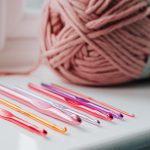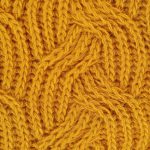Discover the key factors that make your favorite fabric top quality.
From the fiber content to the weave or knit, knowing what to look for can enhance your overall satisfaction.
Consider the fabric weight for the perfect balance of comfort and durability.
Ensure colorfastness to keep your fabric looking vibrant wash after wash.
And don’t forget about the finishing techniques that add that extra touch of luxury.
Dive into this article to learn more about what makes your favorite fabric stand out from the rest.
Table of Contents
Fiber Content
When it comes to choosing your favorite fabric, understanding the fiber content is key for you to make informed decisions. The fiber content of a fabric determines its durability and breathability, two important factors to consider when selecting the perfect material for your needs.
Durability refers to the ability of a fabric to withstand wear and tear, making it last longer. Fabrics made from natural fibers such as cotton and wool are known for their durability, as they can withstand frequent use and washing without losing their shape or integrity. On the other hand, synthetic fibers like polyester and nylon are also highly durable, making them a great choice for items that require strength and resilience.
Breathability, on the other hand, refers to a fabric’s ability to allow air to pass through, keeping you cool and comfortable. Natural fibers like cotton and linen excel in this aspect, as they’ve natural moisture-wicking properties that allow sweat to evaporate quickly. This makes them ideal for warm weather or intense physical activities. However, it’s important to note that not all synthetic fibers lack breathability. Some innovative synthetic fabrics are designed to be breathable and moisture-wicking, making them suitable for a wide range of activities.
Weave or Knit
To further explore the top quality factors in your favorite fabric, let’s now delve into the weave or knit of the material. The weave or knit refers to the way the fabric is constructed, and it plays a significant role in determining its characteristics and performance.
Here are some advantages of knit fabric:
- Stretch and flexibility: Knit fabrics are known for their ability to stretch and move with your body, providing a comfortable and unrestricted fit.
- Breathability: Knit fabrics are often more breathable than woven fabrics, allowing air to circulate and keeping you cool in hot weather.
- Wrinkle resistance: Knit fabrics tend to be less prone to wrinkling, making them a great choice for travel or everyday wear.
- Easy care: Knit fabrics are generally easy to care for, as they’re less likely to shrink or require ironing compared to woven fabrics.
Pros and cons of woven fabric:
- Durability: Woven fabrics are typically more durable and resistant to tearing and fraying, making them suitable for heavy-duty applications.
- Structure and shape: Woven fabrics hold their shape better than knits, making them ideal for tailored garments and structured designs.
- Versatility: Woven fabrics come in a wide range of weights, textures, and patterns, offering endless possibilities for design and style.
- Less stretch: Unlike knits, woven fabrics have limited stretch, which can be both an advantage and a disadvantage depending on the intended use and desired fit.
Understanding the weave or knit of your favorite fabric will help you make informed decisions when choosing materials for your clothing or home décor projects. Consider the advantages and disadvantages of each type to find the perfect fabric for your needs.
Fabric Weight
As you consider the top quality factors in your favorite fabric, it’s important to delve into the subtopic of fabric weight. Fabric weight refers to the heaviness or lightness of a fabric, and it plays a significant role in determining its durability and breathability.
Fabric durability is crucial when it comes to choosing the right fabric for your needs. A heavier fabric weight often indicates a higher durability. Fabrics with a heavier weight tend to be more resistant to wear and tear, making them suitable for items that will be subjected to frequent use or rough handling, such as upholstery or outerwear. On the other hand, fabrics with a lighter weight may be more prone to damage and may not withstand heavy usage as well.
Fabric breathability is another important aspect to consider. Fabrics with a lighter weight tend to be more breathable, allowing air to circulate and preventing overheating. This makes them ideal for clothing items worn in warmer climates or during physical activities. However, fabrics with a heavier weight may be less breathable and may trap heat, making them better suited for colder climates or items that require insulation.
Colorfastness
Colorfastness is an essential quality factor to consider when evaluating your favorite fabric’s durability and longevity. The color of your fabric should remain vibrant even after repeated washing and exposure to sunlight. Here are four reasons why colorfastness is important:
-
Long-lasting beauty: Fabrics that are colorfast will maintain their original color for a long time, making them look fresh and vibrant even after multiple washes.
-
Stain resistance: Colorfast fabrics are less likely to absorb stains, making them easier to clean and maintain. This is especially important if you have young children or pets who may accidentally spill liquids or food on your fabric.
-
Durability: Colorfastness is often an indicator of overall fabric durability. Fabrics that retain their color are less likely to fade, fray, or show signs of wear and tear over time.
-
Cost-effectiveness: Investing in colorfast fabrics can save you money in the long run. Since these fabrics maintain their color and quality, you won’t need to replace them as frequently, saving you from unnecessary expenses.
When choosing your favorite fabric, remember to prioritize colorfastness. This quality factor ensures that your fabric remains stain-resistant and durable, keeping it looking beautiful for years to come.
Finishing Techniques
One important factor to consider in your favorite fabric is the variety of finishing techniques used. These techniques play a crucial role in determining the overall quality and characteristics of the fabric. One aspect influenced by finishing techniques is the surface texture. Finishing techniques such as brushing, sanding, or shearing can alter the texture of the fabric, giving it a softer or smoother feel. This can greatly enhance the comfort and tactile experience of wearing the fabric.
Another important consideration is the durability and longevity of the fabric. Finishing techniques such as mercerization or heat setting can improve the fabric’s strength and resistance to wear and tear. These techniques help to prevent pilling, fraying, and fading, ensuring that your favorite fabric retains its original quality and appearance for a longer period of time.
Frequently Asked Questions
How Does the Fiber Content of a Fabric Affect Its Durability and Longevity?
The fiber content of a fabric greatly impacts its durability and longevity. Different fibers have varying levels of strength and resilience, which can affect how well the fabric holds up over time.
Can the Weave or Knit of a Fabric Affect Its Breathability and Comfort?
The weave and knit of a fabric can impact its breathability and comfort. The way the fabric is constructed affects how well air can flow through it, resulting in either a more breathable or less comfortable fabric.
What Factors Should Be Considered When Determining the Appropriate Fabric Weight for a Specific Project or Garment?
When determining the appropriate fabric weight for your project or garment, consider factors such as the desired level of insulation, drape, and durability. These fabric weight considerations will help you achieve the desired outcome.
How Can Colorfastness Impact the Longevity and Appearance of a Fabric?
Colorfastness is key for your favorite fabric’s longevity and appearance. Sunlight can fade colors, so choose fabrics with high colorfastness. Also, frequent washing may affect the fabric’s appearance, so opt for fabrics that withstand washing well.
What Are Some Common Finishing Techniques Used in Fabric Production That Contribute to Its Overall Quality and Performance?
Common finishing techniques used in fabric production greatly contribute to its overall quality and performance. These techniques, such as dyeing, printing, and chemical treatments, help enhance the fabric’s appearance, durability, and functionality.
- Tetron Fabric for Marine Applications: Durability and Use Cases - June 18, 2025
- Tetron Fabric for Outdoor Furniture: Weather Resistance and Care - June 18, 2025
- Tetron Fabric for Wall Coverings: Style and Application Tips - June 18, 2025



